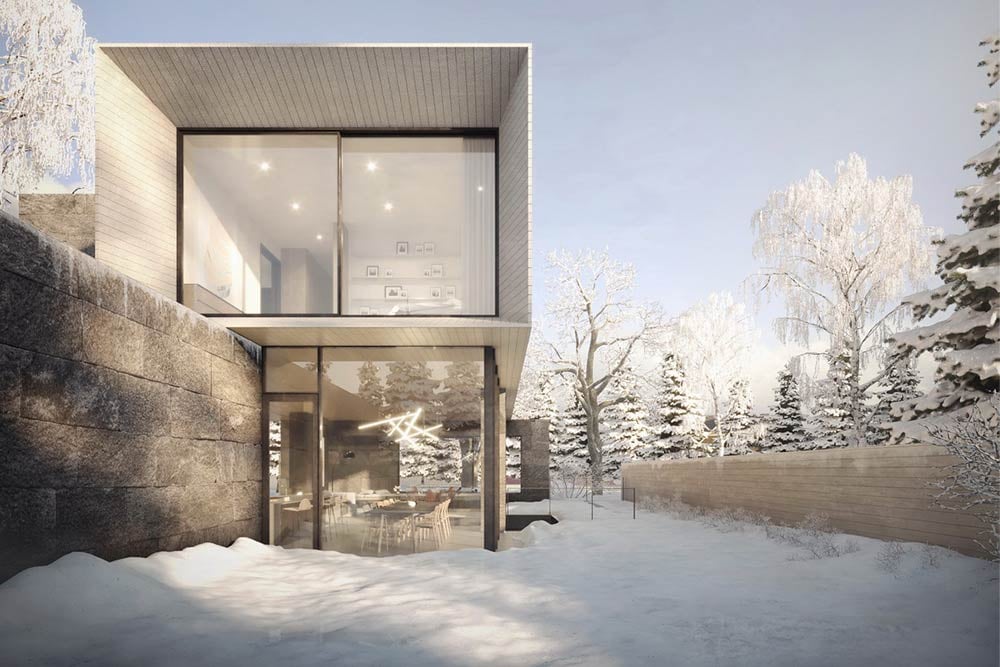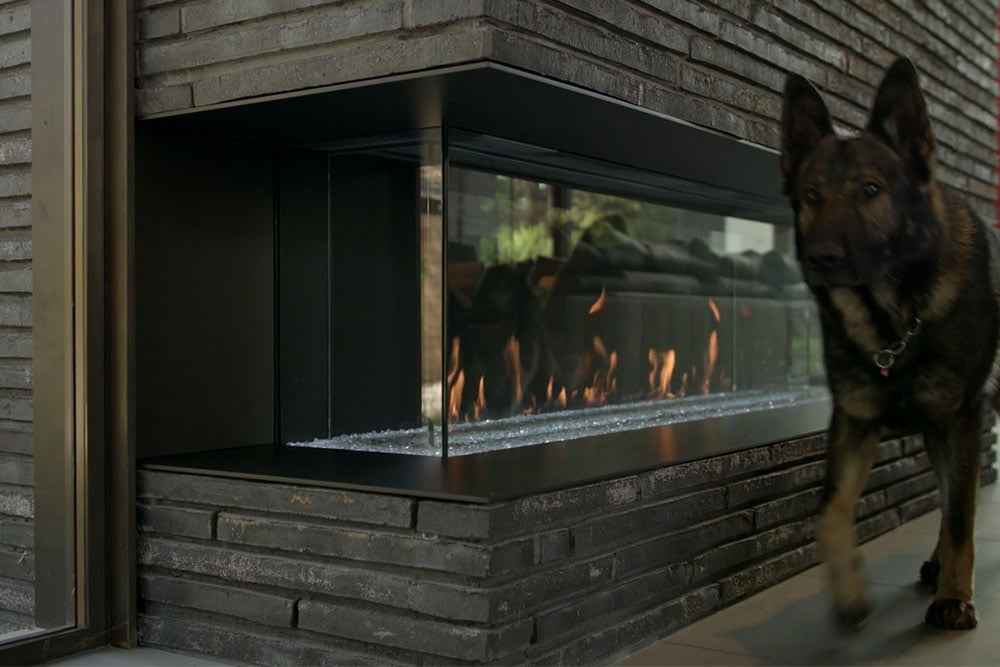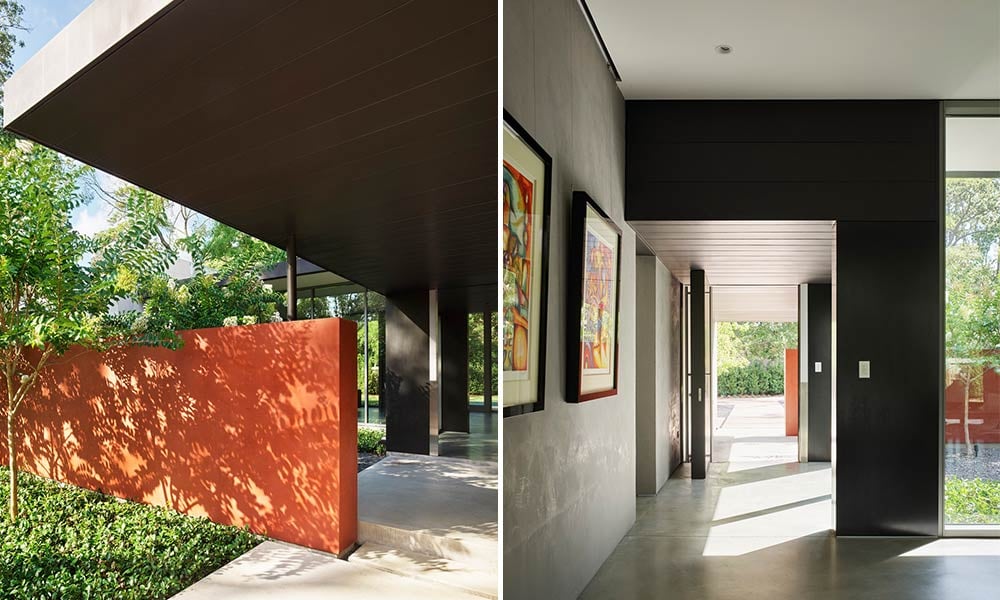.jpg?width=1200&name=modern-home-in-a-cold-climate-snow-(featured).jpg)
If you are thinking about designing and building a custom modern home, there is a lot to consider. What is the budget for your project? How do you want the home to make you feel? How do you plan to use your space? What general design ethos appeals most to you, and why?
Perhaps most importantly: Where will the home be situated?
This last question is an important one to ask for a number of reasons. First, a major hallmark of modern design is ensuring that a home or structure feels connected with its site and surroundings. In this regard, where you build will impact decisions such as your layout, program, and exterior material selection. But beyond this, different climates bring with them their own unique challenges and realities, which can and should impact your project.
As just one example, if you are designing and building a home in a cold climate, there are a number of factors you should consider. We explore these below.
Things to Consider When Designing a Home in a Cold Climate
1. Orientation
When you are building in a warmer climate, such as in Los Angeles or other parts of Southern California, most of the discussion around the home’s orientation lies in ways you can strategically leverage it to cool the home.

In colder climates, the opposite is true: By positioning the home in a way that allows it to get as much sunlight as possible throughout the day, it’s possible to use it to heat the home and reduce your energy consumption. For example, you might orient the home in such a way to capture the eastern morning sun so that it has the opportunity to heat the home earlier in the day.
Another consideration is to think critically about your landscaping needs, such as your tree selection. You might be able to, for instance, incorporate deciduous trees in your yard that will provide shade during the warmer summer months. As they lose their leaves in the fall, however, this will allow more light into the home, allowing you to meet two needs at once.
2. The Envelope
A building’s envelope can be thought of as the physical barrier between the conditioned (inside) and unconditioned (outside) spaces. A well-sealed envelope will make it easier to keep the home warm in the cooler months while reducing energy consumption and the risk of drafts.
When it comes to properly sealing the home’s envelope, you’ll need to consider:
- Insulation: Continuous insulation that wraps around the house on the outside of the studs will help prevent heat loss and drafts.
- Windows and doors: High-quality windows and doors that are thermally broken will prevent thermal bridging and, ultimately, heat loss during the colder times of year.
- Interior air quality: With the building tightly sealed, also consider the challenge of making sure that the interior quality remains good. This will often involve the installation of a unit called a heat recovery ventilator (HRV) that brings in fresh air from the outside, filters it, and transfers heat so that energy isn’t lost, as well as a humidifier/dehumidifier.
3. Heating
When it comes to heating your home, as mentioned above, you will want to take advantage of as much of the natural light as possible. In addition to this, we often leverage radiant heating when possible, as it is both energy efficient and comfortable in the home.

If you would like to include a fireplace in your home’s design, it will be important to understand the laws and regulations in the state in which you are building. Many states, such as California, require that fireplaces are sealed.
4. The Exterior
It will also be important to carefully consider the exterior of your home, as in colder climates you will need to account for challenges that are not typically present in warmer climates.
For example, is snow common where you are building? If so, you may want to consider a radiant system outside of your home that heats certain parts of the ground in order to melt the snow. Because this uses a lot of energy, these solutions should be used sparingly and limited to, for example, the most commonly-frequented paths or walkways.

Likewise, incorporating a covered entrance or mudroom into your home’s design will provide you with a space to “shake off” the outside elements, and also allows for a transitional space into the home. The location of this should be based on how you intend to use the space. For example, if you will most often enter the home through the garage or through the front door, that is where the mudroom should be located.
Finally, a colder climate will impact your exterior material palette. You will want to leverage materials that are suitable for freeze-thaw cycles, and which will hold up well with large swings in daily temperatures. Even in the winter, areas that see a lot of sunlight can heat up substantially and then be subjected to freezing temperatures at night, which can weaken or crack poorly suited materials.
5. Furnishings
When adding the final touches to the home, consider where you’re placing furniture. Large heavy furniture such as cabinetry or shelving placed around the perimeter of the home can, for example, act as an additional layer of insulation. Meanwhile, placement may also impact your comfort: In furnishing your bedroom, for example, place your bed’s headboard against an interior wall rather than an exterior wall or window in order to limit the chance of drafts or heat loss during sleep.
Building For Your Climate
Regardless of where you choose to build your home, it is essential that you consider the climate you are building in during the design phase of your project. This will allow you to anticipate potential challenges that can impact the comfort and livability of the space. Your architect should guide you through answering questions around this topic.

Written by Bryn Garrett
Since joining Ehrlich Yanai Rhee Chaney Architects in 2012, Bryn Garrett has been involved with a broad range of the firm’s portfolio, from custom residential and hospitality, to commercial, institutional and creative office. Having equal experience in many aspects of the practice gives him a unique perspective on a project’s context, materiality and environmental impact. Bryn is heading EYRC’s San Francisco studio, which opened in 2017.
